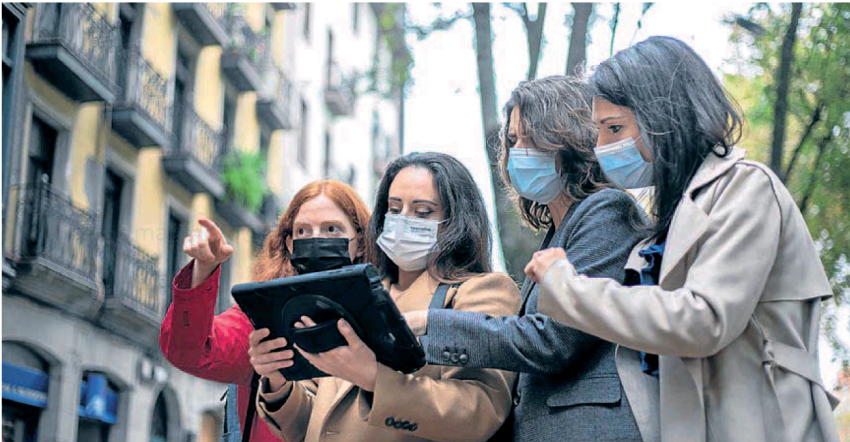This creates a twin digital hybrid that centralises the city’s information in a single, digitised system
Together with Inkolan, a group made up of most of the major public service operators, we have created a digital twin of Bilbao's infrastructures, in collaboration with the City Council and the University of the Basque Country (UPV/EHU).
The digital twin collects data relating to technical infrastructures such as water, gas, electricity, telecommunications and municipal networks. It also integrates the information of the urban elements on the surface.
The project was carried out between 2020 and 2021 in a pilot area in the Uribarri district, in the area surrounding the City Council building itself. Buildings, public spaces and trees have been modelled in 3D, as well as the technical infrastructure; Inkolan service networks and municipal networks.
Differentiated viewers
One of the developed viewers is focused on service networks, in which spatial queries can be made on the buildings connected to a transformation centre: external services can be accessed and information can be visualised in real time.
The other is a sustainability viewer whose objective is to raise public awareness and advance in the fulfilment of the sustainable development objectives. To this end, the different elements have been interconnected. Among other indicators, it provides information on energy consumption, solar and water collection potential, etc.
Digital city twin
A digital city twin is a virtual replica of the main elements of a city and its infrastructures. It allows, in a first stage, to know what the city looks like and what is happening in it in real time. In a second stage, the twin interacts with the city on the basis of its model; for example, it can be used to cut off road access to a historic centre because it has already exceeded its vehicle capacity or redirect tourism to less congested areas of the city.
Thanks to the collection of large data sets, at a more advanced stage, the twin can even be used to model this type of phenomena, to simulate them in the virtual replica and to predict the behaviour of the city on specific days or in the face of specific events. This technology can improve decision-making for more digitalised and efficient urban planning; visualise information in a digitalised way; and obtain data and statistics on monthly consumption, such as connections between the network and buildings or the representation of data in real time.
Its objective is to interrelate the operators' networks with the city for the development of new services that contribute to promoting the strategies for the smartening of cities, improving their sustainability and the quality of life of their inhabitants.

